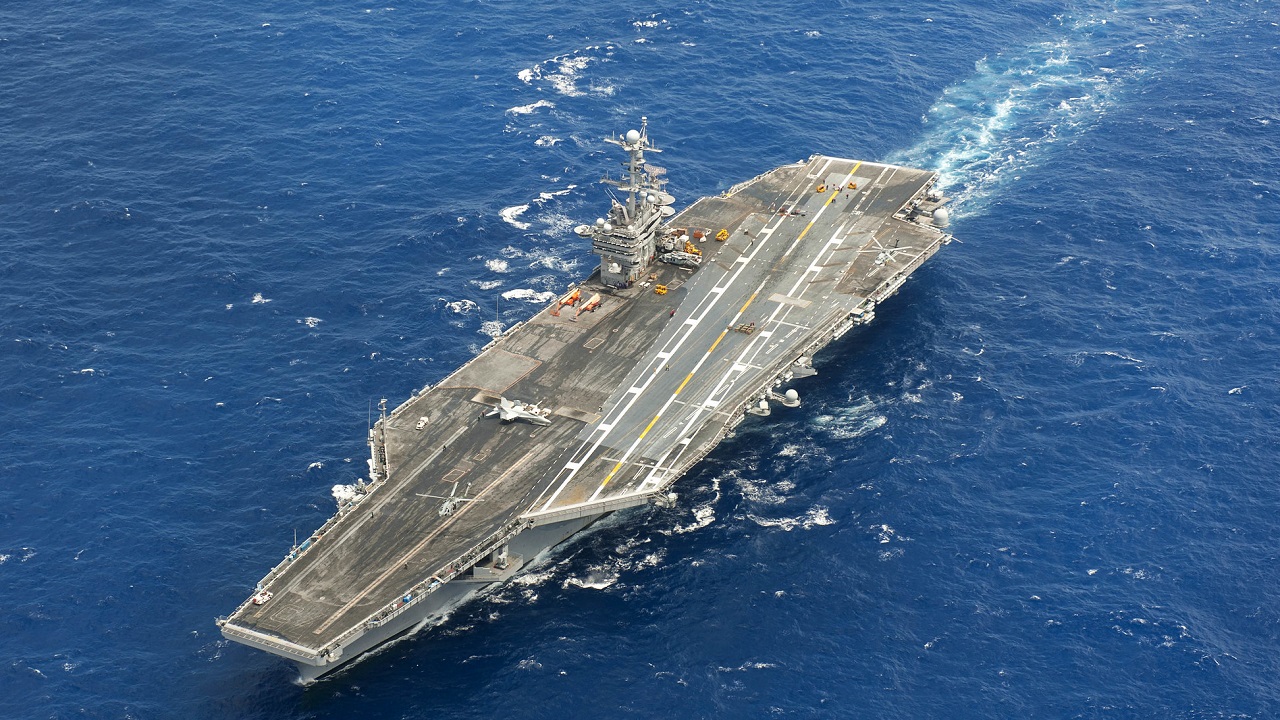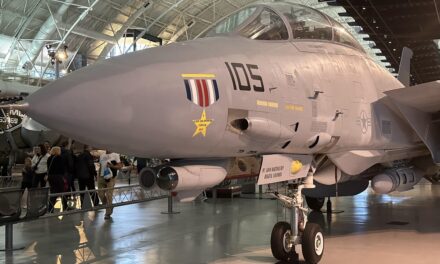We support our Publishers and Content Creators. You can view this story on their website by CLICKING HERE.
Key Points: In the early 1930s, the U.S. Navy explored the concept of flying aircraft carriers with the rigid airships USS Akron and USS Macon.
-These massive dirigibles, equipped with hangars and hooks for launching and recovering airplanes, aimed to revolutionize reconnaissance and air operations.
-Despite their promise, the program faced safety issues, with both airships lost in tragic accidents. Post-WWII efforts to develop similar concepts were largely abandoned.
-Today, drones and concepts like Collaborative Combat Aircraft have supplanted the need for airship-based carriers, leaving flying aircraft carriers as a fascinating but impractical historical experiment.
The Flying Aircraft Carriers Was Once a Technological Marvel
A flying aircraft carrier? Yes, you heard me right. In the early 1930s, there was a movement for airplanes to be launched and recovered by what were called “rigid airships.” These were dirigibles like the Hindenburg that floated thousands of feet above the ground. Known as the “lighter than air” program, the two sister airships – the USS Akron and the USS Macon – were designed to carry airplanes to be delivered like an on-water aircraft carrier.
The program didn’t last long, but it was an original concept that, if the U.S. military had proved and developed it further, could have brought more airplanes into the skies over battlefields during World War Two.
More Details About These Airships
The USS Akron was 785 feet long – just shorter than the Hindenburg. It once flew out of the Akron, Ohio airport with 150,000 people watching in 1931. There were at least 100 passengers on board, including the Secretary of the Navy. The airship flew around 1,000 feet high during the four-hour test flight. In 1933, it flew over Panama. The navy brass was excited and lauded the USS Akron as the lead ship in what was to revolutionize what the military thought about aircraft carriers at the time. The program actually deployed airships until 1962.
Airships were a big deal in the military starting around World War One. The USS Shenandoah dirigible flew all the way across the United States and then turned around and headed back across the country in 1924. Another airship flew more than 330 flights.
USS Akron, real flying aircraft carrier. Image Credit: Creative Commons.
Use Them for Reconnaissance
The idea behind the flying aircraft carrier was that the airships could also fly out ahead of the waterborne aircraft carriers and conduct intelligence, surveillance, and reconnaissance missions. The airplanes on board the airship could even go farther for recon operations.
The airship had a hangar, then a large hook dropped to launch and recover the airplanes. The Akron had 60 “sailors” on board, weighing 110 tons. Not all was smooth; two sailors died after a fall when trying to dock the Akron. But the airship continued to cruise, and it visited Cuba and Florida. Unfortunately, the Akron was somewhat cursed, and it crashed in 1933 in a tragedy that killed 73 personnel. A massive storm in New Jersey forced it to hit the water hard. Then the Navy focused on the Macon, but that airship had trouble too when an upper fin was torn off by wind shear in 1935, and two sailors died when the Macon sunk.
Other Attempts at Flying Aircraft Carriers
Since then, other ideas have entailed aircraft flying from a mothership. After World War II, the Air Force wanted to fly a small jet out of a bomber, but the branch later gave up on that idea. In 2019, DARPA had a drone program in which the unmanned craft could be launched and recovered out of a C-130.

The aircraft carrier USS Harry S. Truman (CVN 75) steams through the Atlantic Ocean July 16, 2014. The Harry S. Truman was underway conducting an ammunition transfer. (DoD photo by Mass Communication Specialist 3rd Class Karl Anderson, U.S. Navy/Released)
The flying aircraft carrier will probably never come to fruition. Now autonomous drones can fly on their own. There is the “Loyal Wingman” concept in which unmanned vehicles are tethered to 5th and 6th-generation aircraft like the F-35 and Next-Generation Air Dominance fighter. The Air Force calls these drones Collaborative Combat Aircraft. This concept will probably likely be developed further in the coming years.
Airships that could carry airplanes were novel before World War II but never made it due to the deadly accidents. Plus, the airship would never be able to deploy many aircraft. Nuclear aircraft carriers can now steam worldwide, and a flying carrier is unnecessary. The idea behind an airship cruising out ahead of conventional aircraft carriers was the best concept to emerge from Akron and Macon. This recon mission will now be performed with the Collaborative Combat Aircraft. Drones have changed warfare so much that a mothership does not need to launch its own unmanned aircraft. These can be tethered to fighters now.
The flying aircraft carrier was novel and made sense then, but dirigibles were unsafe. Events overcame them, and the flying aircraft carrier is now just an interesting historical footnote.
About the Author: Dr. Brent M. Eastwood
Brent M. Eastwood, PhD, is the author of Don’t Turn Your Back On the World: a Conservative Foreign Policy and Humans, Machines, and Data: Future Trends in Warfare, plus two other books. Brent was the founder and CEO of a tech firm that predicted world events using artificial intelligence. He served as a legislative fellow for U.S. Senator Tim Scott and advised the senator on defense and foreign policy issues. He has taught at American University, George Washington University, and George Mason University. Brent is a former U.S. Army Infantry officer. He can be followed on X @BMEastwood.

 Conservative
Conservative  Search
Search Trending
Trending Current News
Current News 





